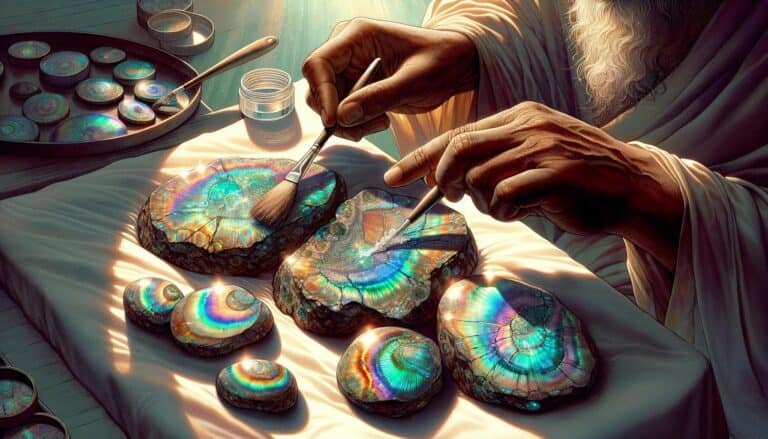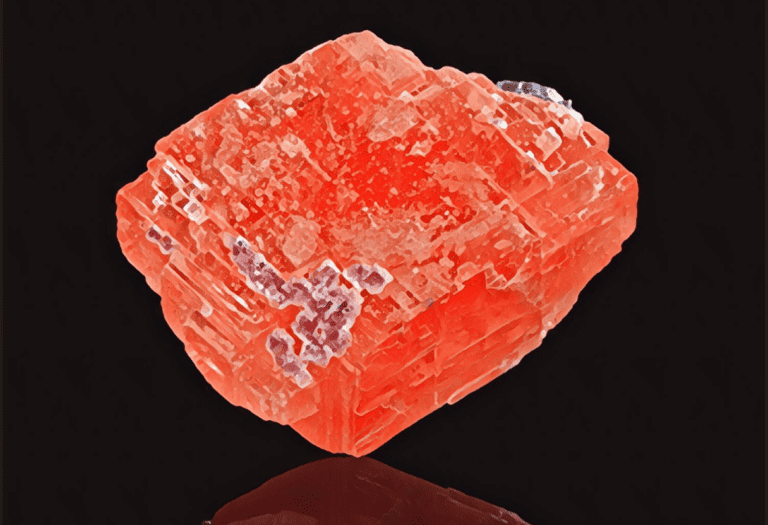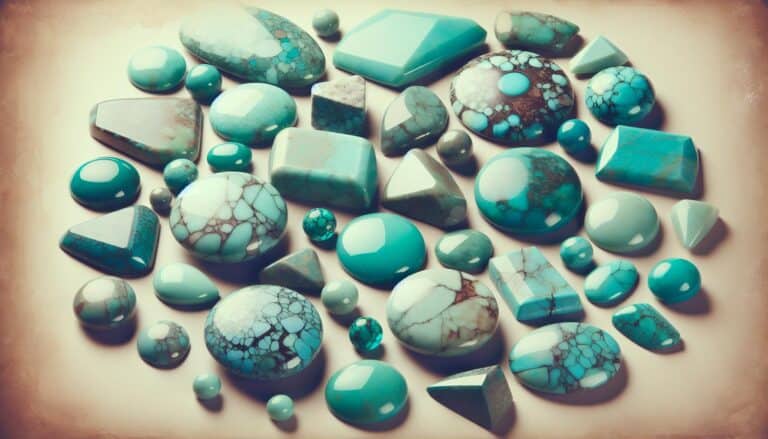Ever wondered what a piece of the cosmos in your hand might be worth?
I’m fascinated by meteorites, these otherworldly treasures that have captivated humans for centuries. It’s not every day you stumble upon a rock that’s traveled across the solar system.
The value of meteorites can vary wildly, and I’ve seen folks’ eyes bulge at the price tags. From space enthusiasts to serious collectors, the hunt for these celestial fragments is as much about passion as it is about investment.
Let’s dive into what makes a meteorite valuable and why some are worth more than their weight in gold.
Meteorite value hinges on factors like rarity, type (e.g., lunar, Martian), condition, size, and historical significance. Rare types and larger, well-preserved specimens fetch higher prices. Scientific and historical value also elevate worth, with rarity and origin being key determinants in the meteorite market.
What Determines the Value of a Meteorite?
When I delve into the factors that set a meteorite’s worth, I’m often struck by the sheer variety of determinants. Rarity is paramount; the less abundant a meteorite type, the higher its value. For instance, lunar and Martian meteorites are sold at premium prices because they’re so scarce.
Condition and preservation also play a significant role. A meteorite that has managed to weather its journey through the atmosphere with minimal alteration can fetch a higher price. Collectors and scientists alike value specimens that retain their original features, including the fusion crust – the outer layer that melts and solidifies as the meteorite passes through the Earth’s atmosphere.
Of course, size matters. Larger meteorites tend to be more valuable because they’ve managed to survive the extreme forces of entry without disintegrating into smaller pieces. However, it’s not just about mass; even small meteorites can be incredibly valuable if they present unique qualities or if they contain rare minerals.
The scientific value of a meteorite can surge its worth significantly. If a meteorite holds the key to unanswered questions about our solar system or contains previously undiscovered elements, institutions may be willing to pay top dollar to include it in their research collections.
Lastly, let’s not ignore historical significance. Meteorites have been part of human history, embedded in culture and mythology. Those with a documented fall that was witnessed or have been part of a historic event often carry additional value for their storied past.
As you can see, various factors interplay when it comes to the valuation of these celestial objects. Here’s a simple breakdown of the key determinants:
- Rarity
- Condition and preservation
- Size and mass
- Scientific contribution
- Historical significance
Each meteorite tells its own cosmic tale, and the sum of its story and physical attributes decides what collectors and scientists are willing to pay for a piece of space.
Rarity: The Key Factor in Pricing Meteorites
When you’re exploring the world of meteorites, it’s clear that rarity reigns supreme when it comes to their value. But what makes a meteorite rare? It’s not just about how often we find them; it’s also about their origins and compositions. Collisions in space can send these extraterrestrial rocks hurtling towards Earth, and those from the Moon or Mars are particularly coveted due to their scarcity.
Iron meteorites, which account for just around 5% of our planetary finds, can be considered rare. Within these, the scarcity level varies depending on the specific metallic composition. For instance, pallasites, a rare stony-iron class of meteorites with olivine crystals, aren’t just rare; they’re breathtakingly beautiful, which significantly boosts their market price.
Likewise, any meteorite classified as a Lunar or Martian meteorite commands a premium because of the extraordinary journey it took to get here. Scientists and collectors are eager to get their hands on these pieces, not only due to their rarity but also because of the invaluable scientific data they possess.
Let’s not overlook the witness factor. Meteorites that have been observed during their fall and recovery, known as falls, are more valuable than finds, which are discovered long after they’ve landed. The rarity is escalated if there’s documented history or a significant event linked to the meteorite, turning it into a celestial artifact of high interest.
While rarity is indeed paramount, the interplay of other aspects shouldn’t be ignored. A meteorite’s value is also closely tied to its classification. For instance, the more primitive the meteorite, the more it’s sought after. Carbonaceous chondrites, which offer a glimpse into the early solar system, can fetch higher prices because they’re seen as holding the keys to understanding the building blocks of our planets.
What’s captivating about meteorite collecting is that you’re not just acquiring a rock; you’re obtaining a piece of the cosmos with a narrative that’s often billions of years old. Rarity captures the fascination of collectors and scientists alike, acting as a central thread that links the value of a meteorite to its life story.
Types of Meteorites and Their Worth
When I delve into the topic of meteorite types, it’s clear that not all space rocks are created equal. There are three primary categories: iron, stony, and stony-iron meteorites, each with distinct characteristics that collectors and scientists value.
Iron meteorites, typically composed of iron-nickel alloys, are magnetic and dense. They’re often sought after for their metallic aesthetic and historical use in tools by ancient civilizations. The prices for iron meteorites can vary greatly, but some of the more exquisite specimens can fetch up to $300 per gram.
Stony meteorites are the most common type and usually less expensive, but some rare examples can be quite valuable. For instance, the Allende meteorite, rich in calcium-aluminum inclusions, is highly prized for providing insights into the formation of our solar system. Common stony meteorites might only be worth $2 per gram, while those with special features can reach values of $20 per gram or more.
Stony-iron meteorites, a blend of metallic iron and stone, are rarer and can command higher prices. The most well-known subgroup, pallasites, showcases striking olivine crystals and can be extraordinarily valuable, with some pieces selling for over $1,000 per gram.
To add clarity, here’s a table with the average worth of these meteorite types:
| Meteorite Type | Average Worth (per gram) |
|---|---|
| Iron | $0.50 – $300 |
| Stony | $2 – $20 |
| Stony-Iron | Up to $1,000 |
Keep in mind, a meteorite’s worth is also heavily influenced by its history and classification. Historical meteorites with well-documented falls often carry a premium. As a meteorite aficionado, I always recommend doing thorough research or seeking expert appraisals when considering the purchase or sale of these captivating celestial treasures. Having a reputable source verify the authenticity and rarity of a piece can make all the difference in its market value. Remember, each meteorite tells its own cosmic story, and it’s this story, intertwined with scientific knowledge and rarity, that ultimately defines its monetary value.
Famous and Historic Meteorites Fetch High Prices
Throughout history, some meteorites have taken on legendary status, selling for extraordinary sums. The Willamette Meteorite, for instance, is renowned both for its size and the story behind its discovery. It’s the largest meteorite found in North America and it fetched a handsome price due to its notoriety.
In the case of famous meteorites, provenance and story greatly enhance value. For example, meteorites linked to witnessed falls such as the Chelyabinsk meteorite, which fell in Russia in 2013, often carry a premium. The sudden and dramatic appearance of these space rocks captures the public imagination, and collectors are willing to pay top dollar to own a piece of history.
The auction of meteorites provides an ideal glimpse into their market value. In 2012, fragments of the Tissint Martian Meteorite, which landed in Morocco, were auctioned and fetched prices of up to $10,000 per gram. These sales reflect not just the rarity of the material, but the human fascination with Mars and the chance to hold a piece of another world in your hands.
| Meteorite Name | Approx. Sale Price Per Gram | Year of Auction |
|---|---|---|
| Tissint Martian Meteorite | $10,000 | 2012 |
| Chelyabinsk Meteorite | Variable* | Ongoing |
*Note: Prices for the Chelyabinsk meteorite can vary widely based on size, shape, and individual seller.
By drawing on these examples, it’s clear price isn’t solely about physical attributes; it’s every bit as much about the lore and aura surrounding a meteorite. Recognizing the tales and histories intertwined with these extraterrestrial objects often translates into a higher monetary value.
Thus, collectors and investors should look beyond the conventional metrics when considering the value of a meteorite. It’s the unique backstory and its place in history that can elevate an ordinary looking space rock into an invaluable relic. This doesn’t mean that every historic meteorite will sell for thousands or millions, but those with a documented and significant provenance certainly have the potential to invoke a bidding war among enthusiasts.
The Impact of Meteorite Age on Value
When it comes to assessing the value of a meteorite, age plays a significant role that shouldn’t be overlooked. Essentially, the older a meteorite is, the more it tells us about the early solar system, which boosts its scientific value tremendously. Collectors and researchers alike are willing to pay premium prices for meteorites that have been dated back billions of years, as these space rocks are windows to the origins of our cosmic neighborhood.
Meteorites are categorized into different age groups, and as you might guess, the ancient ones are usually considered more valuable. For instance, meteorites from the pre-solar era—those that predate our solar system—are incredibly rare and sought after. They’re composed of material that’s older than anything else on Earth and hold the key to unraveling mysteries about our galactic ancestry.
To put this into perspective, let’s talk about the Murchison meteorite. It fell in Australia in 1969, and it’s about 4.95 billion years old. That’s older than Earth itself! Not only does its age make it extraordinarily valuable, but it also contains amino acids, which are the building blocks of life. Such meteorites spike interest not only from collectors but also from scientists who are eager to understand life’s origins.
Naturally, with increased age comes an increased likelihood of the meteorite bearing witness to historic events in space. Impacts, collusions, and interactions with different celestial bodies leave marks on these ancient rocks. The evidence of such events adds another layer to a meteorite’s story and hence, its value.
Radiometric dating is a key tool used by scientists to determine the age of meteorites. This technique measures the decay of radioactive isotopes to establish how long the meteorite has been in existence. The process provides a definitive age, which helps in accurate valuation. When it comes to investment or collection potential, having a certified age for a meteorite gives it an undeniable edge in the market.
Priceless: The Most Expensive Meteorites Ever Sold
When it comes to meteorites that break bank records, there are a few that stand out. The fascination with outer space and rare specimens makes certain meteorites more than just space rocks—they become symbols of extraordinary history and rarity. I’ll dive into some of the most expensive meteorites ever sold and what makes them fetch such high prices.
The Fukang meteorite, a pallasite found in China in 2000, contains a stunning mosaic of olivine and peridot crystals. It’s not just a scientific wonder but also a work of natural art. Pieces of the Fukang meteorite have been sold for up to $2 million at auction, reflecting its breathtaking beauty and rarity.
Meanwhile, the Willamette Meteorite, the largest meteorite found in North America, carries not only a heavy weight but also a hefty price tag. Acquired by the American Museum of Natural History, its price, while not publicly disclosed, is estimated to be in the millions due to its size and cultural significance.
Let’s not forget the Leicester Meteorite, which made headlines selling for approx. $975,000.
| Meteorite | Sold Price (approx.) |
|---|---|
| Fukang | $2 Million |
| Willamette | Estimated Millions |
| Leicester | $975,000 |
Beyond the actual sale price, the allure of these meteorites comes from the stories they carry with them. Whether it’s a meteorite historically witnessed falling from the sky or one unearthed in a remote corner of the world, the tale accompanying the meteorite is often what inflates its value.
As we delve further, we can’t ignore the growing interest in meteorites from educational institutions and private collectors. With each passing auction, we see these buyers driving up prices as they compete to own a piece of space history.
Interest in meteorites shows no signs of waning, and their value is likely to continue escalating as enthusiasts seek to possess these celestial treasures. Whether it’s the intrinsic scientific value, the aesthetic appeal, or the sheer desire to hold a piece of the cosmos, meteorites have cemented their status as one of the most exciting and dynamic collectibles in the world.
Collecting Meteorites as an Investment
When you’re diving into the world of meteorites as an investment, it’s essential to appreciate the uniqueness of each specimen. Just like fine art, meteorites can appreciate in value over time, especially those with extraordinary features or antiquity. In fact, institutional investors and enthusiastic collectors alike understand that owning a piece of the cosmos offers not only sentimental value but also the potential for significant financial gain.
In recent years, I’ve seen the market for meteorites heat up considerably, with savvy investors keen on adding these celestial objects to their asset portfolios. The key, however, lies in thorough research and understanding the nuances of the meteorite marketplace. Here are some elements that every aspiring meteorite investor should consider:
- Rarity: The rarer the meteorite, the more valuable it is. Lunar and Martian meteorites top this list due to their scarcity.
- Aesthetic appeal: Meteorites with aesthetically pleasing features such as the Widmanstätten patterns, often found in iron meteorites, can command higher prices.
- Size and weight: Generally, larger meteorites are more sought-after, though small meteorites with unique characteristics can still be quite valuable.
- Classification: Different types of meteorites, such as chondrites, achondrites, and stony-irons, have varying values attributed to them.
- Legal provenance: Meteorites with a clear, legal chain of custody are more attractive to investors as they ensure the legitimacy of the item.
Another intriguing aspect I’ve observed is the growing interest in using meteorites as an alternative asset class. Because their value doesn’t typically correlate with traditional equity and bond markets, they can offer a diversification benefit to an investment portfolio.
If you’re considering the path of meteorite investing, aligning with reputable dealers and auction houses is paramount. Networking within collector communities can also offer invaluable insights and opportunities that aren’t always publicly advertised. Remember, each meteorite carries its own story and, by extension, its own slice of value. Whether you’re looking to invest for the long-haul or find a treasured piece that sparks personal joy, meteorites present a world of opportunity that’s as vast as the universe itself.
Conclusion: Buying & Selling Meteorite
Wrapping up, the worth of a meteorite can be as vast as the universe itself, hinging on a tapestry of factors like its origin story and physical characteristics.
If you’re looking to step into the world of meteorite collecting, remember to weigh the rarity and visual appeal alongside scientific classifications and lawful ownership. With a discerning eye and connections to esteemed networks, you could uncover a cosmic treasure that’s both a slice of history and a smart investment.
Dive into this celestial market and you might just find an asset that’s out of this world!







